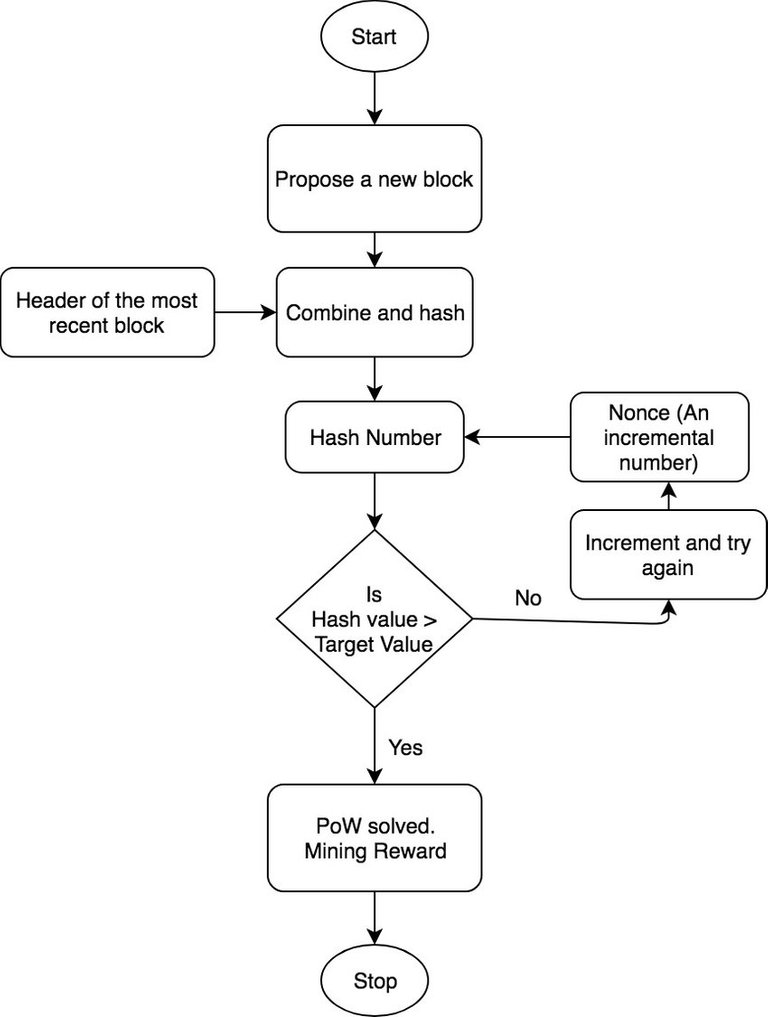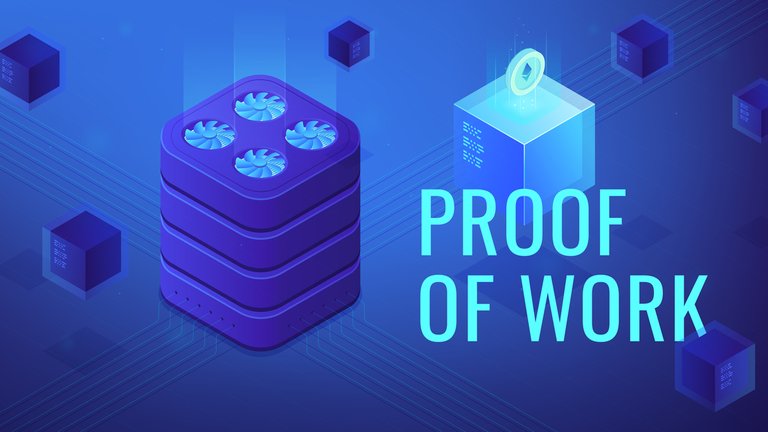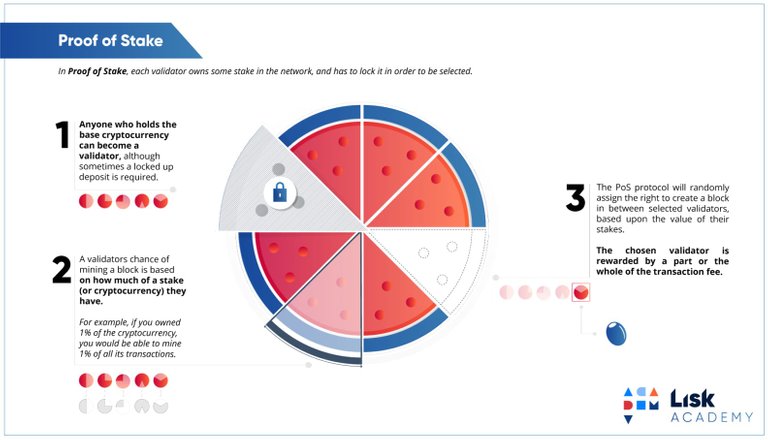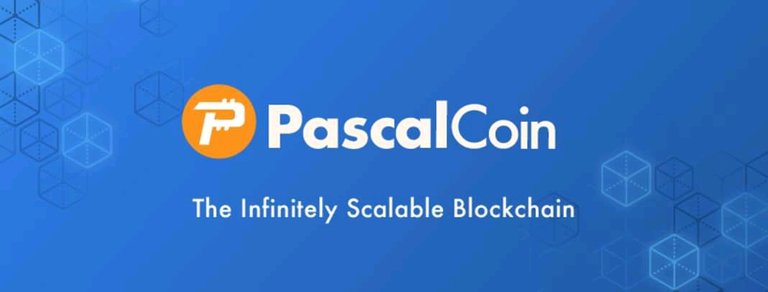Proof of Stake Vs Proof of Work: The quest for healthier consensus algorithm.
Unarguably one of the biggest events expected to happen soon on the crypto space is ethereum moving from Proof of Work to Proof of stake. I’m sure a couple of investors just saved up at least 40 ether coins waiting to put them on the stake. Poor me!, I’ve only got a dot and a zero before a number in my ethereum portfolio, but that’s fine though…yeah.
Ethereum moving to Proof of stake and Defi projects springing up seriously lately could spell a defining moment in the crypto space, being the most popular altcoin and only second to bitcoin itself, ethereum blockchain, its ether coin and the numerous smart contracts running on it have seriously rocked the crypto space and is unarguably the most copied project in blockchain technology. Changing its token generation scheme to proof of stake is for sure a big win for the proof of stake technology.
To be frank, I’ve always been a fan of Proof of work coins, to an extent I feel it is a more clever and a more sophisticated technology than proof of stake, but maybe Vitalik got to school me better, which ever way, Proof of work still holds a special place in my list.
Proof of work is the earliest token generation concept in the crypto space, despite being popularly associated with cryptocurrency and the blockchain technology, the proof-of-work protocol have been in existence long before the advent of cryptocurrency. Introduction of this concept in cryptocurrency have served a huge point of attraction and the carefully crafted work concept and its integration into cryptocurrency have not only made the blockchain technology a sophisticated technological invention, it fueled the communal participation in the process.

Source
To verify a transaction, it must be mined into a block, a block is a collection of transaction records. In a Proof of Work blockchain, miners are required to solve a puzzle before the block is mined, this verifies the legitimacy of the blocks. The mining reward is given to the miner who solves the Proof of Work problem first. The problem is solved with brute force, requiring an enormous number of attempts. The network miners compete to be the first to find solution for each block Proof of Work problem. Put simply, the miners apply the ‘brute force’ notion to solving these puzzles.

Proof of work chart flow Source
The miner who finds the right solution to the problem announces it to the whole network and receives the cryptocurrency reward. This creates a healthy competitive environment with many miners attempting to solve the puzzle. This interesting concept attracts more individuals to join the mining process, hence creating a more peer-to-peer interactive ecosystem.
Proof of stake on the other hand have also been a part of the crypto space for a long time too. First applied by the ‘legendary’ Peercoin, the proof of stake algorithm randomly selects the validator of the next block based on their wealth and age, wealth in this sense is the amount of tokens they have at stake on the network, and how long these tokens have been at stake on the blockchain, proof of stake blockchains uses this work-around to achieve a distributed consensus. The selected ‘staker’ validates the block and is rewarded with tokens which are a percentage of the fee paid for the transaction and relative to the amount of tokens staked by the validator.
In contrast to proof of work blockchain, ‘miners’ in a proof of stake blockchain are known as validators, a validator is required to lock up an amount of their tokens on the blockchain in the ecosystem, validator who validates a block is hence chosen according to the already stated criteria. Being chosen to validate a block in a proof of stake blockchain is a sort of money war, to stand more chances of being chosen, one simply has to stake more tokens, in other words ‘just drop more cash!’
POW and POS algorithms are both clever consensus mechanism, and I seriously don’t know why my sentiments persists, but I’m finding it hard to love both of them equally, just like a polygamous man! Probably because my favourite cryptocurrency project is POW. But that’s by the way, Vitalik is going POS and he’s got his reasons, which to me are valid, I’ve also got my reasons.
An in-depth look at the both concepts shows why most cryptocurrency investors and enthusiasts find themselves in a very tough situation while making a choice between the two consensus algorithms. While POW looks more sophisticated and interactive, POS on the other provides some convenience and flexibility despite being a topic of several criticisms in the past years.
Let’s dive in and take a look at certain parameters which defines these two concepts:
SECURITY
I’ll always be concerned about security first; most people have same opinion too. Validators and miners in POS and POW blockchains are guardians of the blockchain.
In Proof of work blockchains, the miners are the guardians of the blockchain. By requiring some work from the service requester, the proof of work protocol protects the blockchain from several malicious activities such as spamming and Denial of service (DOS) attacks. Considering the tough nature of proof-of-work problems and the fact that solving this puzzle requires a large number of attempts, manipulating the blockchain through the aforementioned means takes much from the perpetrators, this takes the frequency of such attacks and even when these attacks are launched, they are effectively blocked.

Source
To spam on a network, one is required, one is required to send a lot of requests to the blockchain in contrast to sending a single request. The amount of work required is proportional to the number of requests. This efficiently reduced spamming. To add a malicious block, the requester must have a computing power greater than 51% of the network; currently, many POW blockchains are adapted to survive 51% attacks, making it a more tedious process for people attempting to launch such attacks on the blockchain.
For proof of work blockchains, a different mechanism is used to protect the blockchain from attacks. A validator stakes his tokens on a block which they think is valid, a validator is severely penalized if he attempts to validate a bad block and attack the blockchain, he loses his stakes on the network and is prohibited from validating blocks subsequently, with these penalties in mind I doubt if any validator who has a reasonable stake on the network will attempt to validate a bad block and attack the blockchain. To perform a 51% attack on the blockchain, the validator will need to control over 51% of the token supply.
For proof of work blockchains, carrying out a 51% attack depends on how powerful your mining set up is, in contrast, for proof of stake blockchains, it depends on how ‘rich’ you are. But the richer you are, the more you have to lose, hence the probability of putting your over 51% at stake just to attack the blockchain is very low. Proof of work blockchains have however survived many attacks while POS blockchains are subject of many scam events, not saying they are weaker, but…do the math!
Convenience and Memory friendliness.
Proof of work algorithm is a complex computing protocol running a node for a proof of work coin requires enough computing power and of course, a whole lot of electrical energy, working on computer resources, proof of work operations piles pressure on the device resources, stores an enormous amount of data and consumes the device memory in an outrageous manner. Poorly scaling blockchains like ethereum and bitcoin would consume double to three-digit gigabytes on your device and heat up the device.

Source
Proof of stake blockchains on the other hand only considers your stake on the network to select a validator for a block, hence there is no need for a sophisticated computing power. POS blockchain are more flexible and takes up lesser percentage of the device memory. Running a node on a POS blockchain as much easier, of course, you just need to be rich…in their tokens. Probably the main reason why ethereum is moving to POS, this would solve its long issue of scalability and memory-hardness.
Proof of work blockchains are devising a number of techniques to tackle scalability issues, pascal blockchain is infinitely scalable and would even occupy less memory than POS blockchains and of course its POW.

Just like every other POW coins, pascal is earned via the process of mining as miners are rewarded in pascals for solving the POW problem. With the development of the RandomHash protocol,a GPU and ASIC resistant hashing algorithm, the RandomHash protocol was developed to ward off the effects of GPU miners and shift the mining power to the CPU miners while also ensuring that mining can be actively done by numerous miners independently.
Decentralization and genuine community participation.
One of the most popular terms in blockchain technology and cryptocurrency is ‘decentralization’. Removing centralization totally and supporting community-driven decision is one of the selling points of blockchain technology, an environment where every decision is a consensus and every member of the community has equal rights in decision making.

Source
Where it concerns cryptocurrency, security and absence of third-party influence or censorship becomes important. Proof of stake algorithm has a pronounced breach as regards this. If you could lose your stake in a network for validating a bad block, then the network is centralized. The penalty scheme of proof stake blockchains spells doom for decentralization, which defeats a major aim of blockchain technology in the first place. Not sure if there’s a work-around for this.
Running a proof of stake blockchain simply requires validators who hold (a huge) amount of the projects tokens, other holders who wish to earn passively only has one option, ‘buy some tokens and stake them or join a staking pool’. To be a part of the project, one must be a holder in the first place, in contrast, a miner can simply join proof of work blockchains, be a part of the network, contribute to the project and mine some token, hence participants who are not holders of the token initially can participate in the project and earn as they contribute to the network. Token holders in a POW blockchain who are unable to set up a mining rig can join a mining pool, hence, POW offers more opportunities than POS blockchains in this aspect.
Tokenomics
It’s a little bit of dilemma when it comes to how the consensus algorithm influences the token value, I’d say both are considerably good for tokenomics, POW blockchains requires rigorous processes before one could gain tokens from the network, POS blockchains requires some financial commitment to the network before participants could earn. POS blockchains on the hand do not require much external expenses to run, such as power supply and an internet connection; earners from the network are thus not under much pressure to trade their earning to cover up for expenses incurred during the mining process. This may not necessarily affect the value of the tokens, it all boils down to utility of the token, staking creates a utility for the token though. But any project can succeed if they get the core aspect right.
Proof of work and proof of stake algorithm has served most cryptocurrency projects well, a couple of new consensus mechanisms are emerging, however, it is important to note that none of them a perfect, each comes with a particular turn off and a couple of advantages, choosing any depends mainly on the project in question and which consensus supports other aspects of the technology.
For investors, the consensus mechanism of any project is a huge part of its tokenomics, but the utility of the project is the major determinant of it value and return on investment.

This post has been manually curated by @steemflow from Indiaunited community. Join us on our Discord Server.
Do you know that you can earn a passive income by delegating to @indiaunited. We share 80 % of the curation rewards with the delegators.
Here are some handy links for delegations: 100HP, 250HP, 500HP, 1000HP.
Read our latest announcement post to get more information.
Please contribute to the community by upvoting this comment and posts made by @indiaunited.
@joelagbo first of solid read,I can say that you have gathered a nice peice of information. Both has its own advantage pow/pos I generally preferred pow. But its my personal opinion.
Thanks for stopping by
It was a great post, the information is very very easy to understand. Thank you
thanks for reading through.
Your publication was very good, the truth is that it was not a subject that I mastered very much, but many things became clear to me, the truth is that you knew how to explain each of the points in detail! Thank you!
You have to love blockchain technology, everything about it is interesting😃
@tipu curate
Upvoted 👌 (Mana: 0/21)